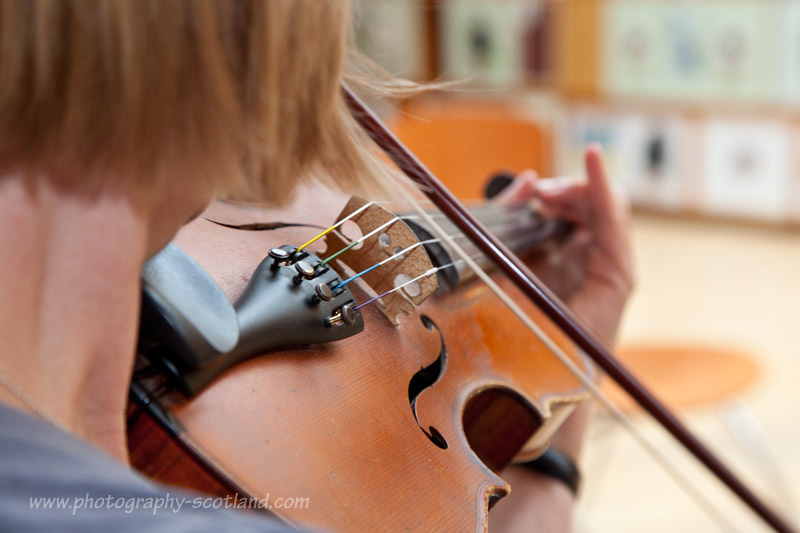Playing in Tune
Tonight we started by learning a harmony to go with the tune we learnt last week. The written music for the harmony is on the music page. We tried playing the harmony along with the tune, with half the class playing the harmony. Then we switched over, so the other half played it. Once we’d done that, we tried alternate people round the room playing the harmony, and also had a go at playing the harmony down an octave.
Then we revisited the embellishments we added to the tune last week. After that, we spent some time thinking about playing in tune with one another. We played through the tune and harmony (alternate people round the room playing harmony or tune) really focusing on what the person on either side was playing, and concentrating on playing in tune with them.
Then we took the notes D, F#, A, and tried playing any one of these notes, in any octave, again listening to the players on either side, and working on playing in tune with them. We tried moving around the room while we did this too. After that, we did much the same thing, in smaller groups, so it was easier to hear. We started with 4 people who were sitting beside each other in the circle. Each of the four played one of the notes as a drone, using long slow bow strokes, and worked on tuning together with the other 3 people. After a short while, the next person round the room joined in, and the first person dropped out. The drones moved around the circle slowly, as each new person joined in. We noticed that as this went round the circle for the second time, our tuning was much better. It’s a useful exercise in really listening to how we’re making music together.
We also talked briefly about the notes that make up a chord. These are the 1st, 3rd, 5th and 8th notes in a scale (which is also often referred to as an arpeggio). For the notes we picked for the exercise above, they form the chord or arpeggio for the scale of D (D = 1st note, F# = 3rd note, A = 5th Note, and a D at the top of the octave would be the 8th note). For anyone wanting to know more about written music, and some basic theory, the book Beginning to Read Music, written by Sarah Northcott, is a really helpful introduction, which explains things clearly, while managing to avoid jargon.
For practicing at home, one thing that can make a huge difference to learning is to play and record yourself regularly. Spend some time doing this, and then listen back to what you have recorded. When we’re playing, and focusing on learning a new bit of technique, it’s very difficult to give your full attention to also listening to the sounds you’re producing. If you record and listen regularly, you’re giving yourself an opportunity for instant feedback on the effect of any changes you make to your technique.
We finished off the evening by playing through Paddy’s trip to Scotland together

